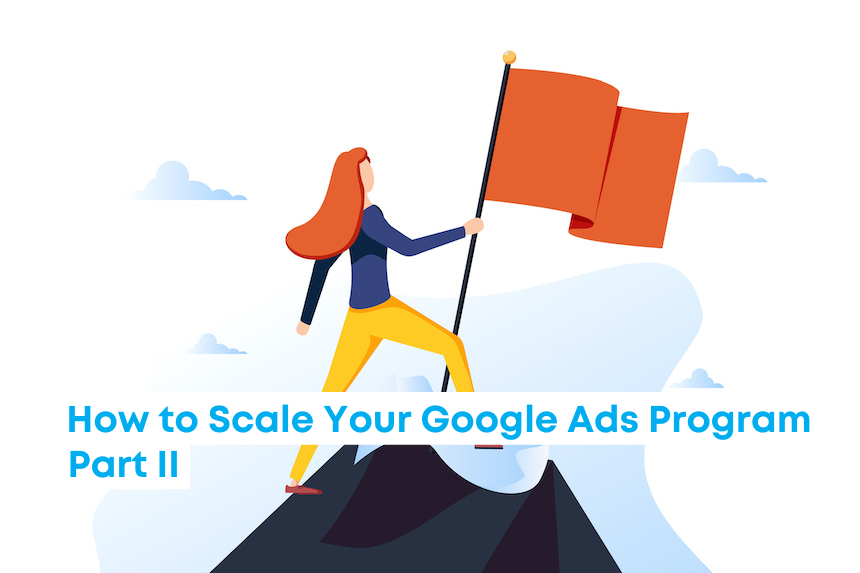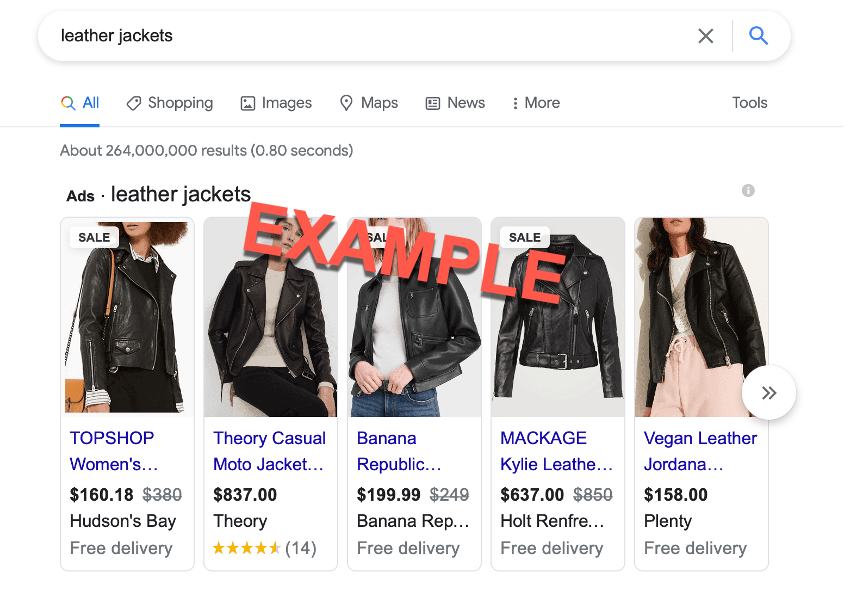In a previous blog post, we dove into the topic of what it takes to scale your Google Ads program.
In that article, we explored five of the top 13 factors necessary.
They included:
- Open communication between client and agency
- A baseline of faith and truth
- A focus on longer-term goals
- An open budget
- International advertising.
In this article, we’ll continue on to discuss the remaining eight factors.
Because unfortunately, the answer to “How to scale” isn’t a simple one—many factors are involved.
So here are the remaining eight elements needed to successfully grow your program:

6. Multiple ad formats
Another common mistake that can limit your ability to scale is to only put budget behind top converting ad formats.
So, for example, if you’re getting more conversions with text search ads than Display ads, you discontinue Display ads and put all your budget behind text search ads.
But this is a symptom of short-term thinking.
Ad formats perform differently at different parts of your sales funnel.
By not limiting yourself to one ad format, you’re helping to ensure you’re not focusing on bottom-of-funnel conversions at the expense of top-of-funnel leads or vice versa.
7. Shopping campaigns
Another great way to scale your Google Ads program is through shopping campaigns, particularly if you sell products on your site.
Shopping ads are highly visual and display photos of your product along with your brand name and price (as in this example):

While all ad campaigns types are worth testing, Shopping campaigns have the greatest potential (for most clients) to impact sales—and your bottom line.
8. Microsoft Ads
While the Google Ads Network gets all the attention, it’s not the only paid search game in town.
Microsoft Ads is an important alternative advertising network to explore.
It may not have the same volume of users and searches as Google, but it often has higher conversion rates and better ROAS.
9. Device optimization
Device optimization is another area you shouldn’t overlook as you seek to expand your PPC program, especially if your business is B2B.
Back in the day, most B2Bs adjusted down their mobile bids because most B2B employees conducted work-related Google searches on their office desktop (or so the thinking went).
That was then.
Today, people use mobile devices more than ever, work-related or not. So it might be time to re-examine your mobile bid strategy.
10. Always “on” campaigns
Similarly, some B2Bs turn off their Google campaigns on weekends, believing that their customers are only online Monday to Friday.
This thinking has also changed. We do see lower search volume on weekends, but we also see valuable conversions and lower CPCs.
And since many advertisers do turn off their ads on weekends, you have the opportunity to take up that space on SERPs.
11. Optimized post-click experience
Landing pages and the post-click experience are another important aspect of growing your Google Ads program.
Clients that make an effort in this area have a major advantage over those that don’t.
This can be a tricky area to navigate because it’s something that we, as an agency, have little control over.
We rely on our clients to put the necessary pieces in place, although we’re always happy to give advice and guidance when needed.
12. A focus that goes beyond performance
The great thing about paid search is that you can accurately measure your results down to the penny. It’s one of the things that attracted me to the industry in the first place.
Knowing that you’re spending $1 to make $2 is powerful.
But still, we need to change how we define success. It’s not always about sales and conversions.
If you want to scale your Google Ads program over time (and grow your business), you need to assign equal value to brand building metrics, such as post-click engagement and new visitors.
13. The right keywords… with a caveat
Keywords are another element in successfully scaling your PPC program.
But I’ve put keywords last on this list for a reason.
Yes, choosing the right keywords is important.
And if you do your research up front, you should be able to identify most of those keywords at the outset.
Of course, you should continue to monitor and adjust. New service offerings and market trends may surface new keywords to add to your campaigns.
The problem with keywords is that it’s easy to take things too far.
I’ve audited too many Google Ads accounts where they’ve literally added 1000 new long-tail keywords for “testing,” which adds little value.
So are keywords essential to scaling your PPC program? Yes, absolutely.
But more keywords don’t translate to more sales. They’re not a silver bullet.
Scaling Your Google Ads Program Requires a Multifaceted Approach
As you can see, scaling your Google Ads program is a complex process. You can’t just make a couple of adjustments and expect it to take off.
Instead, scaling requires a holistic approach where everything is on the table, from your faith in PPC marketing generally, to your budget, to a focus on long-term results.
Scaling might seem like a lot of work, and it is. But it’s well worth the effort.
Because if you’re willing to go for it, you may grow your Google Ads program AND your business.






